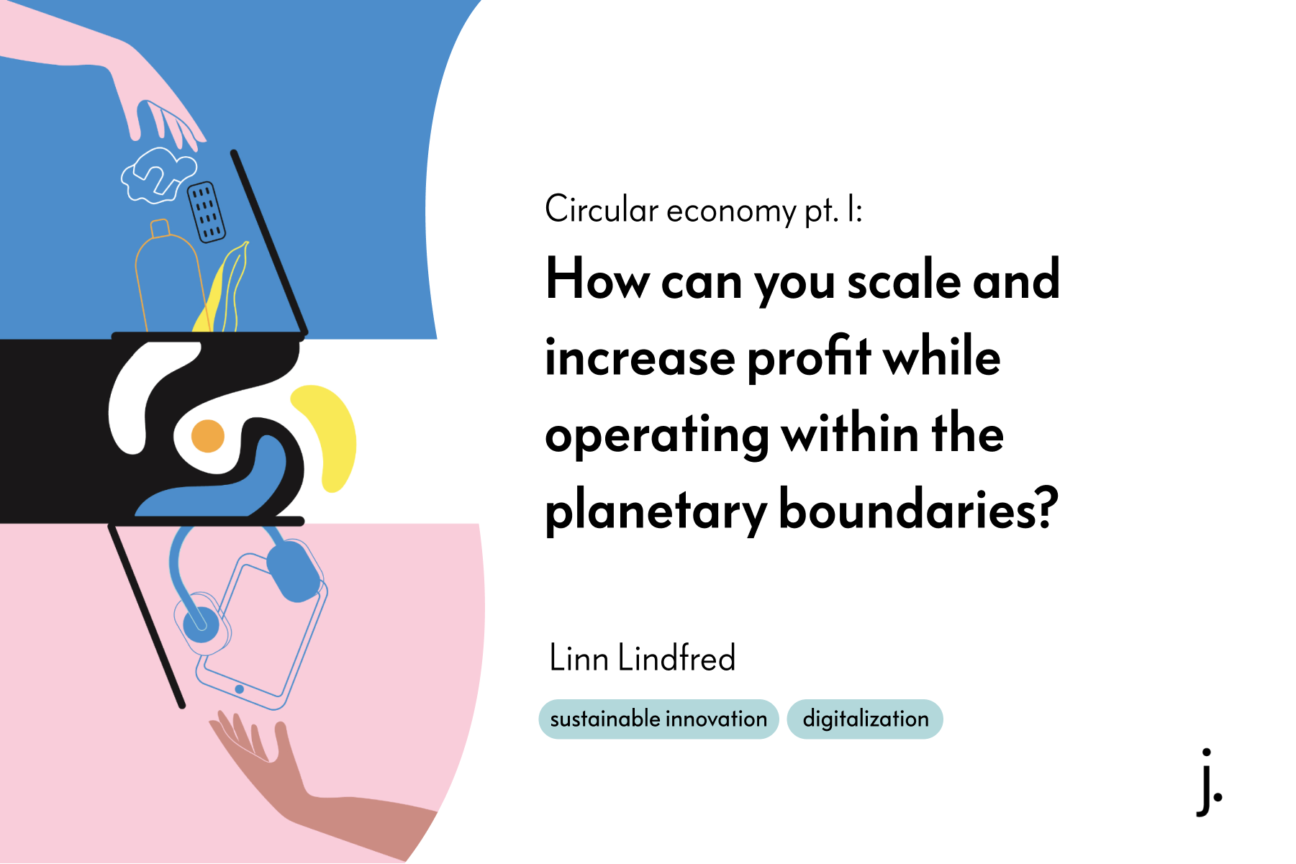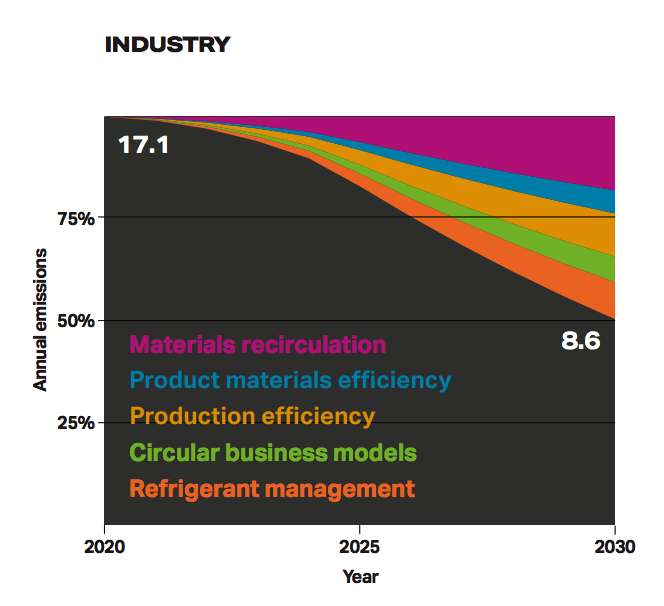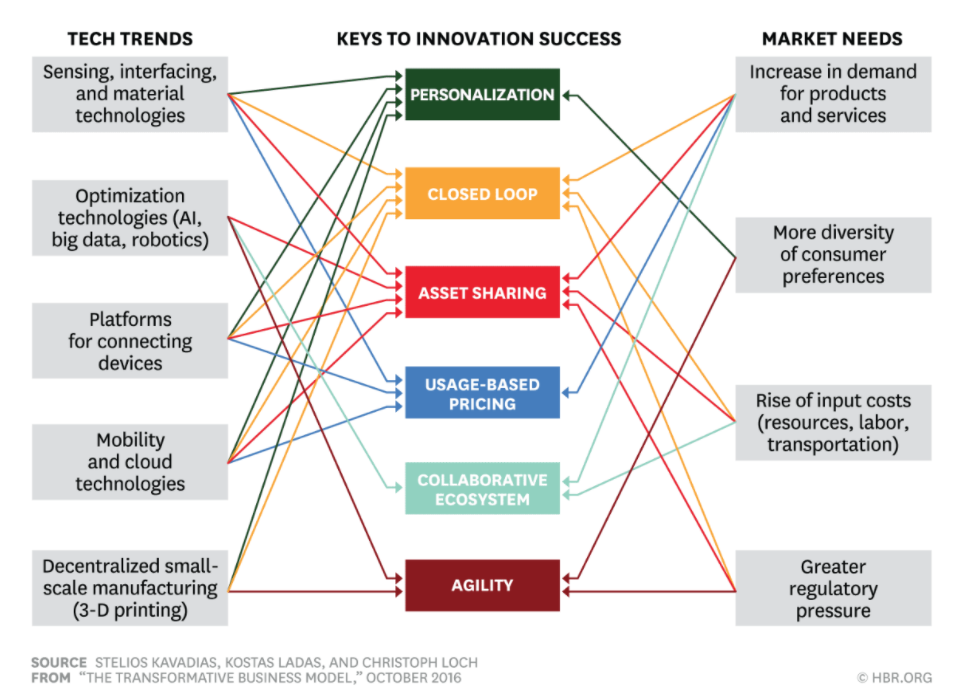There have been many discussions lately about how we need to change our society and economic system after covid-19 to avoid similar catastrophes in the future. The pandemic has not only pushed the agenda for less dependency on global imports but has also raised doubts as to whether or not the way back to “normal” should be business as usual.
Or if we could use this abrupt halt in our economy to bounce back to a stronger, more resilient and environmentally friendly one. Although sustainability and circular economy has been a hot topic for a long time (read my previous blog post here). In short, we need to secure our future and do what it takes to lower our CO2 emissions, reduce resource extraction, minimize waste and stay within our planetary boundaries.
In the coming weeks, I will do a series of blog posts discussing how and in what ways digitalization and circularity can be an enabler for a new normal. I will explain how businesses could scale and increase profits while operating within our planetary boundaries.
The Exponential Roadmap (2019) finds that we can halve our CO2 emissions in our industries in 2030, through scaling five economically attractive initiatives (see graph below). The graph clearly shows how important circular solutions are to achieve the results we need.
The graph shows GHG emissions (Gton). Graph from The Exponential Roadmap 2019
One company that has started to move towards a more circular business (in some areas) with the help of digitalization, is SKF. SKF has a connected production which means that they can be flexible and have local production at a competitive cost. It also means that they can offer the service of providing reliable machines with performance based contracts instead of only selling a product. This enables SKF to monitor their assets and take ownership and control of their products, offering maintenance and repair based on data insights.
In this way they can also take back their products at end-of-life so that they can replace/reuse and recycle them. Ultimately, SKF makes more money, their products have higher quality and longer lifetime, and they can also sell (or lease) refurbished products second hand. SKF gets more revenue the longer their products can be used by their customers. In a linear economy SKF would instead make more money if their products break and their customers would need to replace them. Without connected production/products, it would be impossible to offer this solution at a competitive price while also scaling and making a profit.
Two important questions we need to ask ourselves are:
-
How do we make these initiatives happen?
-
Is now the right time to scale?
1. How do we make these initiatives happen?
Answer: Linking a (new) technology to an emerging market need via a (circular) business model.
A study published in Harvard Business Review analyzed how 30 successful companies managed to scale and disrupt industries. Airbnb was one of the investigated companies. The point of this study was to illustrate that a technology cannot transform an industry on its own. The transformation happens when a business model, (in this case with Airbnb, a circular business model of sharing assets), enables the linking of a new technology to an emerging market need.
“Before platform technology existed, there was no reason to change the hotel business in any meaningful way. But after its introduction, the dominant business model became vulnerable to attack from anyone who could leverage that technology to create a more compelling value proposition for customers. The new business model serves as the interface between what technology enables and what the marketplace wants.”
Illustration copied from the study: The transformative business model (2016) in Harvard Business Review.
In the same way as Airbnb managed to link a technology to an emerging market need via a new business model, SKF found that they could satisfy their customers’ needs better with a new (circular) business model of taking full ownership of their products. They could offer more value by promising to provide products that work all the time, thereby relieving their customers of the hustle of repairs and the cost of downtime. Again, this could not be done in an economically viable way without the use of digital tools.
2. Is now the right time to scale?
How do you actually know it is time to go circular? Why not “stay safe” and just change your linear business model a bit?
Answer: Linear can satisfy current needs but circular will meet future demands. Not focusing on this now could mean that you destroy the future of the company.
In his book The Innovator’s Dilemma, Clayton Christensen describes the difference between sustaining innovation and disruptive innovation. He argues that:
“Sustaining Innovation satisfies customers’ current needs; disruptive innovation evolves to meet customers’ future needs better.”
Making improvements in the linear economy would fall in the category of sustaining innovation (doing the same things a bit better) whereas circular initiatives instead are disruptive (making the old things obsolete).
Christensen also writes:
“Following a sustaining innovation path makes sense in short term but can doom the company to failure. Dedicating valuable resources to a niche and unproven opportunity can be the future of the company.”.
I believe that is true, not only for creating new products, but also for new business strategies.
Manuel Pulgar-Vidal, Leader of WWF’s global climate and energy practice, argues that needs are changing and disruption is coming. In The Exponential Roadmap 2019, he says:
“Our history is defined by momentous societal transformations: the industrial revolution, the women’s vote, civil rights, the end of apartheid in South Africa and the Green Revolution. Major leaps forward are driven by disruption from a combination of social movements, government policies, market confidence, new technologies and science. These five forces are aligning once more.”.
If we believe in the above quote, disruption will come from numerous sources. Looking at current business, national, and global strategies we see that they have a common goal. Sweden has a national strategy for circularity, the European Union has a Circular Economy Action Plan and Amsterdam has agreed upon becoming a fully circular city in 2050, IKEA has pledged to become fully circular in 2030, H&M Group “aims to lead the change towards a circular and renewable fashion industry”, Microsoft commits to achieve a zero-waste goal for direct operations, products and packaging by 2030 and Google’s new mission is to accelerate the transition to a circular economy.
Clearly, circular economy is at least present in global companies- and national strategies. Although needless to say, scepticism is plentiful as to how these goals will actually be fulfilled and if they do in fact enable a circular transformation or only adds a “circular layer” on top of a very linear business and/or economy as a whole.
Nevertheless the communication that is being sent out shows that there is a future need for circular solutions. Or is it already here?
Today, the linear economy is fit for those who want to make profits in the short term. Circularity is about making yourself profitable in the long term and avoiding the expensive costs and risks of not keeping up with future demands, changing market conditions, and new regulations. If you don’t jump on this train, you are at risk of becoming the new Kodak. As you may recall, Kodak failed to address the niche market of digital cameras, and eventually got disrupted by other companies when the niche market grew bigger than the traditional one. I believe that this will happen to those who continue operating in a linear economy. All evidence points to the fact that society will have no choice but to demand a different consumption and production pattern. Now it’s just a race to see who can implement and scale the solutions that can answer to that demand.
One industry I believe will become disrupted soon is the waste industry. There is an untapped (circular) market potential: trading with companies’ waste. Digitalization enables connecting buyers and sellers of waste; turning a cost into a profit for the seller, and a cheaper access to material for the buyer. Cyrkl successfully trades with left-over building material and building waste in several countries but a perhaps more “famous” example in Sweden is Karma or TooGoodToGo that connects buyers and sellers of leftover food. Incumbents better watch out…!
Understanding the potential of digitalization and how it, in combination with new circular business models, can answer to emerging market needs is a skill that all companies need today. Feel free to get in touch with me if you want to know more about how we at Jayway can help your organization with that skill. We offer presentations and lectures around these topics as well as projects where we help you design and develop digital solutions that enable scaling circular initiatives.
In my next blog post, I will discuss how we can design these digital solutions that can enable circular products, processes and business models to evolve.





